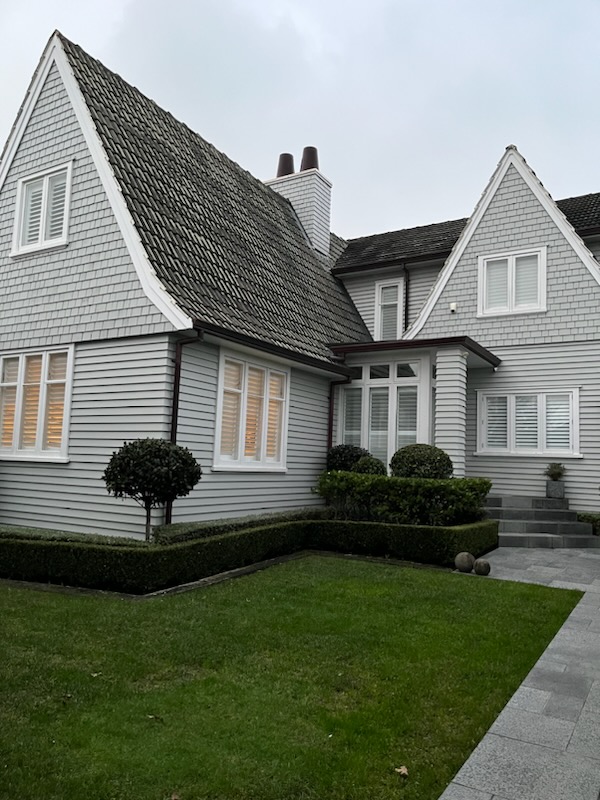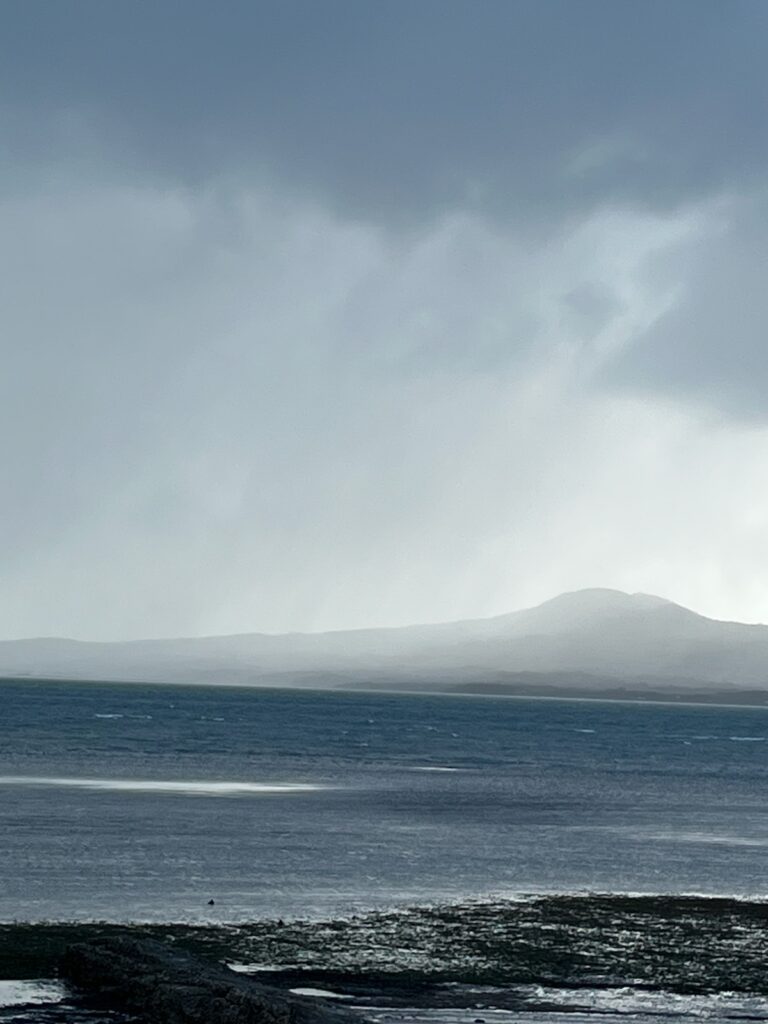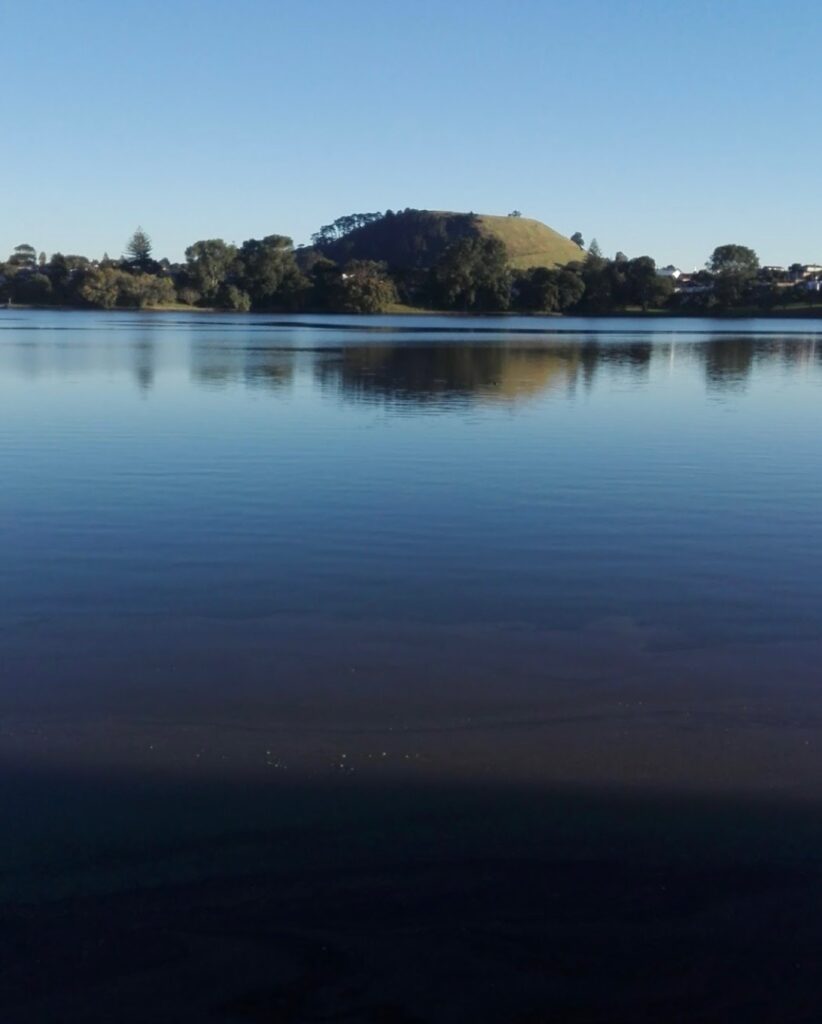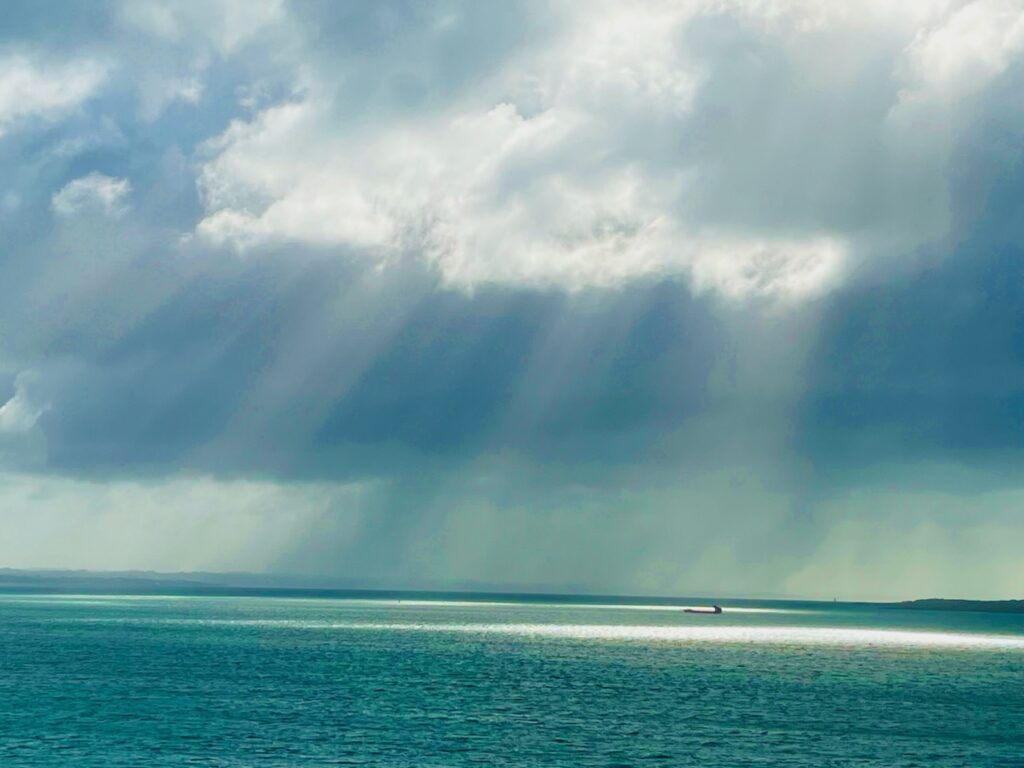A grey 48 hours in Auckland
Grey skies, driving rain, excellent coffee, lots of dogs. That’s little Saint Heliers Beach, a tiny cove on the east coast of New Zealand.
Pack some thermals, and a very good rain coat. Umbrellas don’t work with the coastal breezes…umm, try gales.



Visitors are assured the weather is unseasonable, but that’s not confirmed. Three visits to NZ since April, and its been cold, wet and blowy every time. Perhaps the locals should concede that they live on a little over 100 000 square miles in the middle of the south (very south) Pacific, and brisk and damp weather is a given.
St Heliers, a quaint little suburb along the snake like coast line of Auckland, is perched on a steep promontory, affording striking views across to the volcanic island of Rangitoto, and right back to the city and the north shore bridge. Every house has a nook of a balcony or look out to catch its piece of Harbour view. The architecture is a crazy paving mix of pilgrim weatherboard, Tudor English, Art Deco stucco, and designer coastal chic. The coastline itself bristles with endless jagged inlets and beaches, bays and estuaries, rocky cliffs and sandy coves. Even on these windswept winter days, intrepid kiwis are out on the water, windsurfing and boating.
The dogs of Auckland insist on taking their owners to the beach, for a scamper through the waves and to meet their pawsy friends. Most shops and cafes are very dog friendly, and handlers pause (excuse the pun!) for a cappuccino on the waterfront to deliberate over doggy peccadillos. “This is Peanuts. He’s quite spoilt. He’s a cat-dog really”.
Gardens in these cool southern climes, with endless moisture, are just asking for rhododendrons or particularly camellias, which are all in saucer size bloom at this time of the year. But there are spurts of the South Pacific with hibiscus and bougainvillea in sheltered nooks, and even palm trees fighting against the prevailing. The cliche of green NZ is not dispelled, with all the verges and lawns emerald green, even amongst the gloomy winter fog and slate grey skies.

Is it a park, is it a paddock? Painted wooden stiles mark the entry to St Helier’s unique Churchill Park, a green space full of walking tracks… and cattle troughs! This 40 ha parkland was created in 1945, and named after the hero of the hour, Winston You Know Who.
Perched on top of the Auckland Isthmus, and catching the full force of the coastal gusts, the park is home to 60 head of cattle, as well as native trees, birds and the endangered native longfin eel. A traditional food source, (known as Orea) to the Māori, these freshwater eels climb out of the ocean as juveniles, and move up the Tamaki River here, and other inland watercourses, but mysteriously migrate back across the Pacific, as far as Tonga, to breed.
One can wander down from Churchill Park, via a rocky path along the coastline, into the Tahuna Torea Nature Reserve – a seabird sanctuary of mudflats and mangroves. Look out for Stilts, Herons, Finches, and the Kotare (NZ kingfisher). Cross the tidal wetland, lagoons, and bridges past giant figs to reach sheltered and misty Panmure basin, a deep and placid circular body of water that is evidence of the volcanic field upon which Auckland is built.



If this windswept naturalist experience is a bit extreme for you, a more sedate path can be found walking the opposite way north west from St Heliers. Take the cycle path, or the boardwalk for several kilometres along Tamaki Drive, which winds around the picturesque and protected beach side suburbs of Orakei, Mission Bay and Kohimarama. Meet roller bladers, joggers and of course dog walkers, and endless peaceful vistas around this idyllic suburb.

5 things not to forget when packing for a wet weekend in Auckland
- Gloves – leather and/or waterproof
- Silk or bamboo thermals – not too bulky once you are walking or active.
- A skirt and nice pair of fancy tights for evening – makes a simple change from trousers/jeans.
- A hooded, knee length raincoat with lots of pockets. Great to keep your phone at the ready (protected from the weather), and important to keep your legs as warm and dry as possible. Binoculars for watching the birds (or the windsurfers
